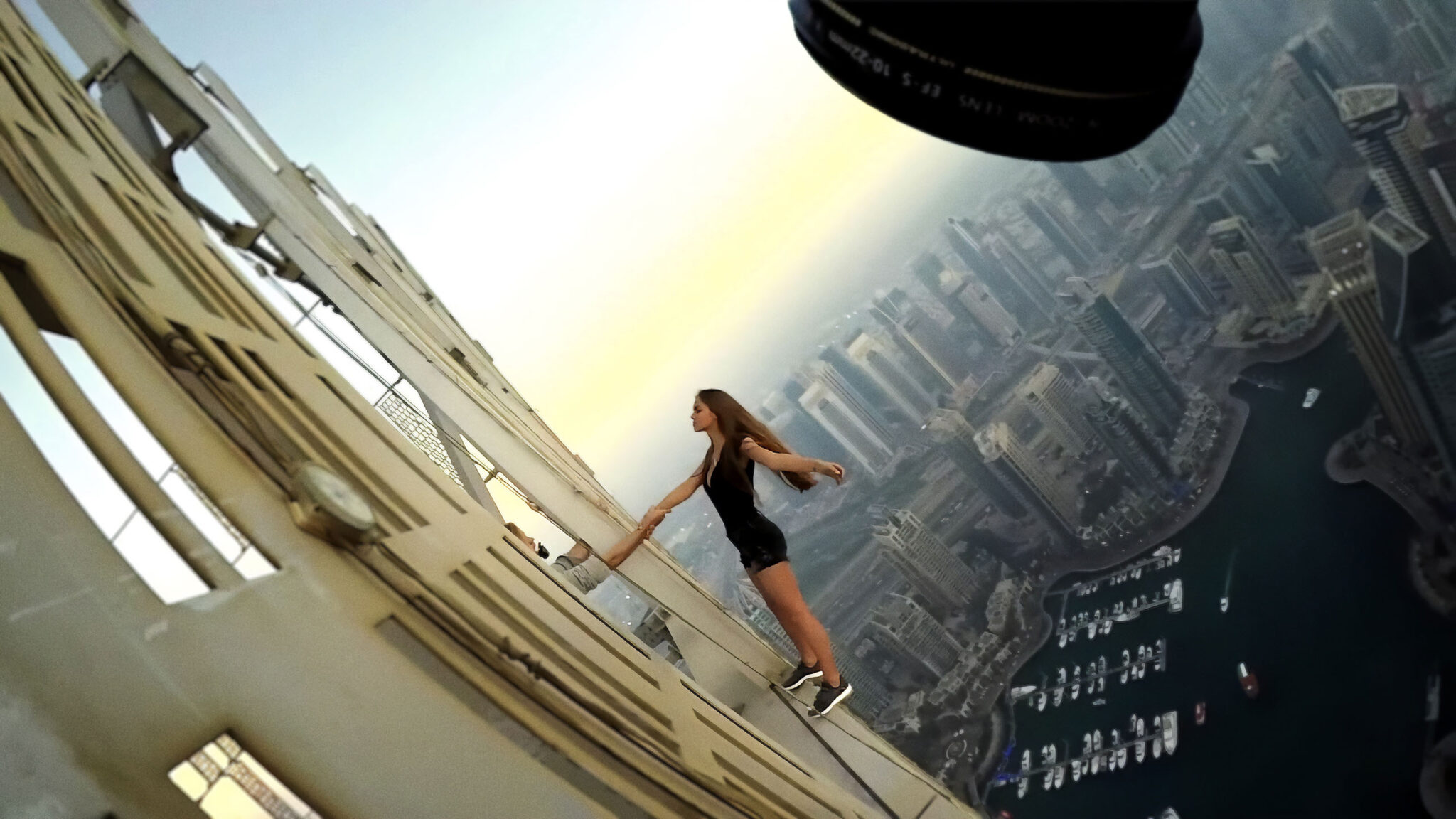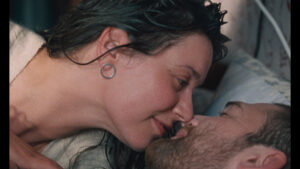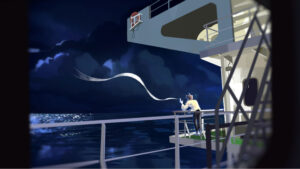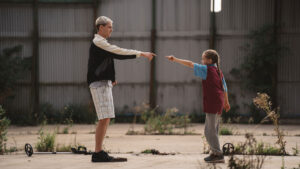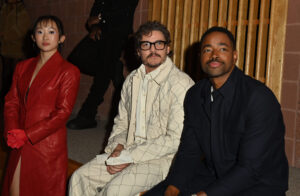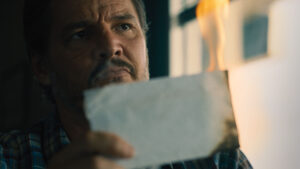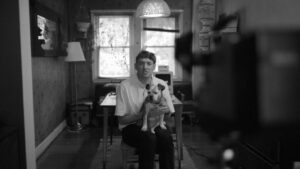One of the most exciting things about the Sundance Film Festival is having a front-row seat for the bright future of independent filmmaking. While we can learn a lot about the filmmakers from the 2023 Sundance Film Festival through the art that these storytellers share with us, there’s always more we can learn about them as people. This year, we decided to get to the bottom of those artistic wells with our Backstory questionnaire!
Directors Axel Danielson and Maximilien Van Aertryck’s debut feature-length documentary, And the King Said, What a Fantastic Machine, captures a wide range of emotions in its quest to trace the history of humankind’s relationship with the camera. “The photographic image is a huge possibility,” says Danielson. “What should we do with that possibility?” With great possibility comes great responsibility, especially when still and moving pictures have the potential not only to document reality, but to shape it, too. “There are 45 billion cameras in the world,” says Van Aertryck. “Are we happy with the way they are being used?”
The filmmakers’ exploration of the myriad ways we use cameras won the World Cinema Documentary Special Jury Award: Creative Vision at the Festival in January, and the documentary will have the chance to reach even more audiences when it screens as part of the 10th edition of Sundance Film Festival: London 2023, taking place July 6–9.
Below, discover the directors’ favorite part of the filmmaking process, the challenges that accompanied the project, and the vital reason this story needs to be told now.
What was the biggest inspiration behind the film?
Axel Danielson: The way moving images depict the roles we all play in front of the camera, and how the invention of the camera has changed society.
Maximilien Van Aertryck: Our fascination for the opportunities the invention of the camera has created.
Describe who you want this film to reach.
Danielson: The audience that wants to be both thought-provoked and entertained.
Van Aertryck: I hope the film can reach those audiences that are actively using or engaging with cameras but haven’t given a lot of thought about their history or the consequences they can have.
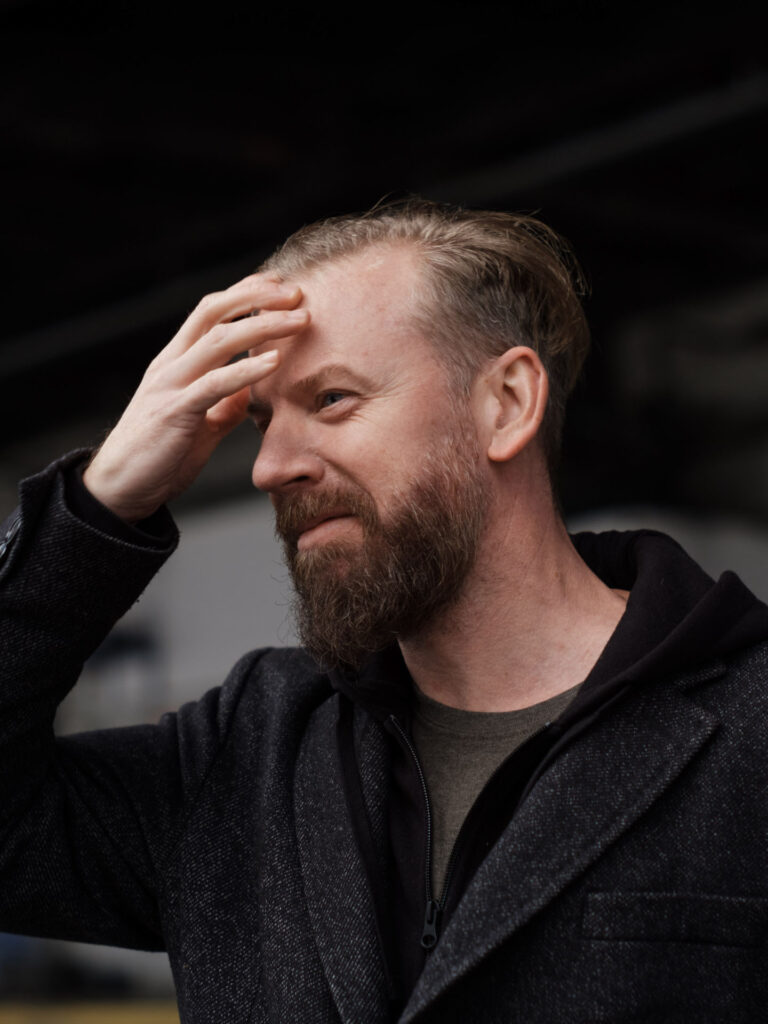
Why does this story need to be told now?
Danielson: Because the photographic image has a direct connection to the possibility for liberal democracy to make it or not.
Van Aertryck: Because there is a confusion of words in our time when it comes to images we’ve seen: real, fake… what do we mean? Making sure we know what we mean is, I think, a way to reduce polarization.
How do you want people to feel after they see your film?
Danielson: I want people to feel they have gone on an emotional and intellectual roller coaster ride and really want to talk to others about the topics of the film.
Van Aertryck: I want them to feel an urge to discuss what they’ve seen with others.
Your favorite part of making the film? Memories from the process?
Danielson: The editing. When the film takes form and the ideas and scenes find their place (or not) in the narrative.
Van Aertryck: Digging through different archives until we would find some precious archival footage, that is such a thrilling feeling when it happens.
What was a big challenge you faced while making this film?
Danielson: To set the boundaries and limits of the film. The topic is huge, and our narrative is filled with associations. Our editor Mikel Cee Karlsson (editor of Triangle of Sadness) has really helped us get to our goal with the film’s structure.
Van Aertryck: Structuring the hours of footage we had from over 100 years of camera and media history. We couldn’t have done it without our amazing editor Mikel Cee Karlsson.
Why is filmmaking important to you? Why is it important to the world?
Danielson: Cinema can disrupt, provoke, and convey ways of thinking and make you see things from other perspectives. It can create empathy. Like many art forms, it can widen the point of view of the world, I think.
Van Aertryck: Photographic images have a big influence on us. It’s up to us to use this opportunity in the way we feel is contributing to society.
If you weren’t a filmmaker, what would you be?
Danielson: A musician. I love playing different instruments, especially accordion and drums. It is what I do to disconnect my mind from work.
Van Aertryck: A teacher. I love making others excited about learning something.
What is something that all filmmakers should keep in mind in order to be better cinematic storytellers?
Danielson: Be brave artistically! Don’t focus too much on the story, focus on the idea. In this contemporary time, everyone is doing storytelling, from big institutions to the smallest company. And all go for the same structure of storytelling. I say, go for the idea, the story will unfold. And never neglect your audience.
Van Aertryck: To let images speak for themselves and to identify where the quality in a project should lie.
What three things do you always have in your refrigerator?
Danielson: Ketchup (demand from my kids), carrots (demand from me toward my kids), taco sauce (You always buy one when shopping for taco dinner, because you don’t remember if you still have some left. And you always do have some left.)
Van Aertryck: Cheese, cheese, and cheese
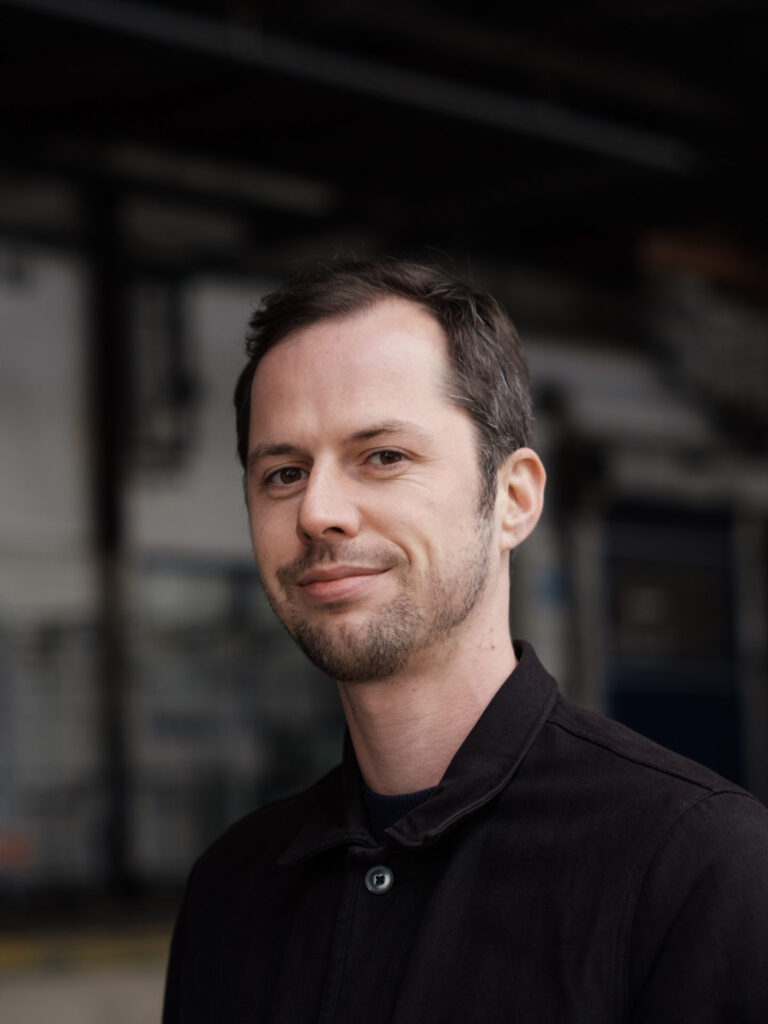
What’s the last book you read?
Danielson: February 1933: The Winter of Literature by Uwe Wittstock
Van Aertryck: A Brief History of Equality by Thomas Piketty
One thing people don’t know about me is _____.
Danielson: I worked for three years as a firefighter when I was in my twenties. Before I got into filmmaking.
Van Aertryck: I’m a plane nerd that’s afraid of flying.
Early bird or night owl?
Danielson: Night owl
Van Aertryck: Early bird
What’s your history with Sundance Institute?
Danielson: We had our short film Ten Meter Tower in the 2017 Sundance Film Festival.
Van Aertryck: I came to the Sundance Film Festival in 2017 with our film Ten Meter Tower.
What’s your favorite film that has come from the Sundance Institute or Festival?
Danielson: American Factory by [directors] Steven Bognar and Julia Reichert was amazing, and a great short is The Rabbit Hunt by [director] Patrick Bresnan and [editor] Ivete Lucas.
Van Aertryck: The documentary Machines by [director] Rahul Jain. I saw it at the Sundance Film Festival in 2017 and it was a great experience. Likewise for the short doc The Rabbit Hunt.

